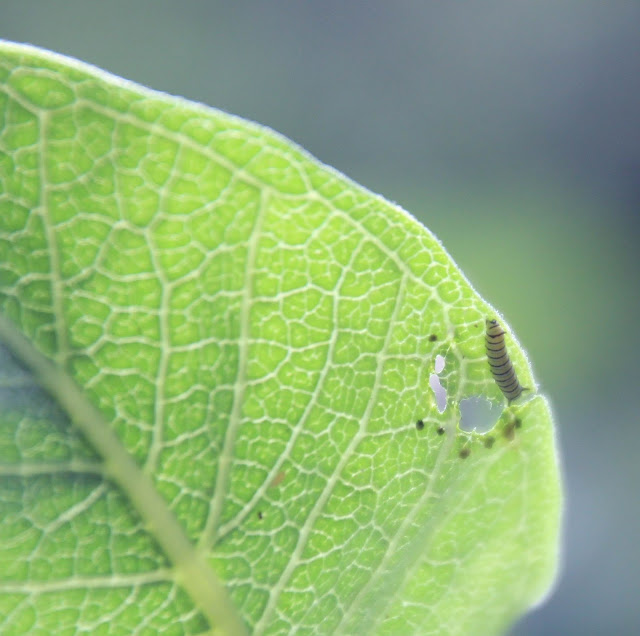By Beth Sullivan
Many of Avalonia’s preserves
include a water feature. There are ponds, marshes, streams, even
rivers. You can walk along or around or even through many of these,
but along the shoreline there is a better way to enjoy the view-by
kayak. With the end of summer very near, crowds are diminishing,
colors are intensifying, migrating birds move along the shore on
their way south, and even some butterflies and dragonflies stage
migrations over water along the coast.
Marsh access by kayak
Many of our coastal preserves are
marsh lands, and it is difficult and unwise to walk on the fragile
salt marsh. Usually the closest you can get is a glimpse from the
road. To really appreciate the expanse of grasses, the wildlife along
the inlets, channels and over the land, it is ever so much better to
view from the water.
 |
| Paddle up the Quiambaug Cove to to to Knox Family Farm. |
Sandy Point is an Island, so of
course you need a boat. Put in from Barn Island Boat launch and
paddle across little Narragansett Bay, and you can pull up close to
shore and either paddle or wade, towing your boat along the North
Shore. Now you can observe the staging of migrating shore birds,
sandpipers, plovers and
terns. Some of them are protected species so avoid undue disturbance.
Also from the Barn Island Boat launch you can head far east to find
the Continental Marsh Preserve with its new Osprey nest platform, or
go west and up the cove to see the Wequetequock Cove Preserve and
meadows full of milkweed and Monarchs.
 |
| From Dodge Paddock or Barn Island, Sandy Point is an easy paddle. Photograph by Roger Wolfe. |
Another launch spot is a small
access area on the side of Wilcox Road, off Rt 1 in Stonington. From
there you have some choices. Paddle under Rt 1, up the Quiambaug
cove, and on the east shore look for Avalonia Land Conservancy signs.
The Knox Family Farm runs along the cove for quite a ways and
includes a small inlet area. On the gravel bank of the cove,
volunteers have created a new kayak landing with tie-up rail and
stairs up the slope. From there, you can do a nice loop hike on the
preserve.
 |
| A new kayak landing was created and posted by our volunteers. |
From the same roadside launch,
nearly the entire west shore, except the Cemetery edge, is the Knox
Preserve-a totally different vantage point. The rocky shores are so
different than the mowed trails. When the tide is low you can get
onto a small beach that is hard to reach from the trail, due to
massive poison ivy patches.
 |
| Along the rocky shore of Knox Preserve, people enjoy the water at low tide. |
Paddle under the Rail Road Bridge
and head east, around Lord’s Point, and the next big marshland area
is the Woolworth-Porter Preserve. From this angle you can see the
beautiful greens of the marsh grasses and can head up a little inlet
or creek and wind deeper into the preserve. This actually extends
quite a ways north, to the rail Road Tracks, but the waterway doesn’t
extend very far.
For a longer trip, from the same
launch site, you can head west along the shore and out and around
Latimer’s point, remembering that the Knox preserve is just on the
other side of the tracks. Look for the osprey nest high on a pole.
Going west around Latimer Point, you will come to another large
marshland area. This is a big expanse of Cottrell Marsh which extends
all the way over to Mason’s Island Road. This area has some
interesting high islands with trees and shrubs where Herons and
Egrets love to roost at this time of year.
 |
| Cottrell Marsh has wooded knolls and extensive salt marshes to explore. |
Go through the gate at the Simmons
Preserve, on North Main Street in Stonington, to a little access area
onto Quanaduck Cove. You can paddle up, under Rt 1, and find yourself
at the marshy southern tip of Paffard Woods.
 |
| From Simmons Preserve it is a gentle paddle around Quanaduck Cove. |
Respect the fragile marsh ecosystem
Getting out on
any of the marsh areas is really not encouraged. The ground can be
quite unstable, the habitat is fragile, and there are several species
of birds that are in need of protection during nesting season.
 |
| You can pull up kayaks in several areas, but please be careful on fragile marsh habitats. |
Take note of what a wonderful buffer
the marshlands are, protecting the upland from storm surges and tides
and providing a sanctuary for all sorts of wildlife. Avalonia is
dedicated to protecting and preserving the marshlands along the coast
line. Enjoy the view from the water.
Maps and directions to all these
preserves can be found on our website.
Photographs by Beth Sullivan, unless
otherwise noted.

























